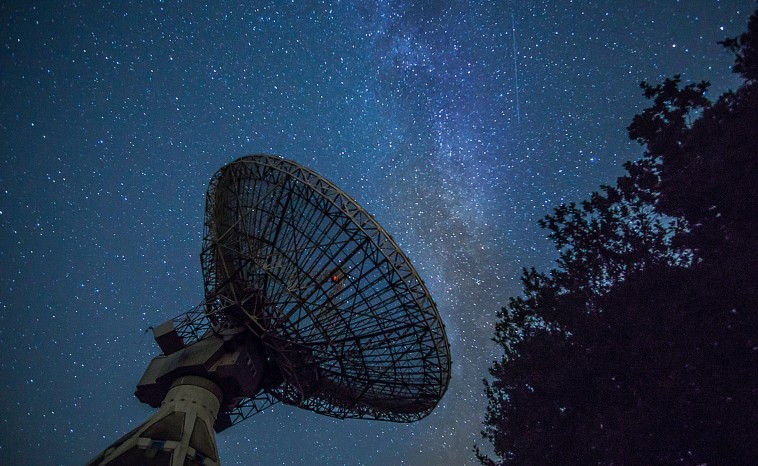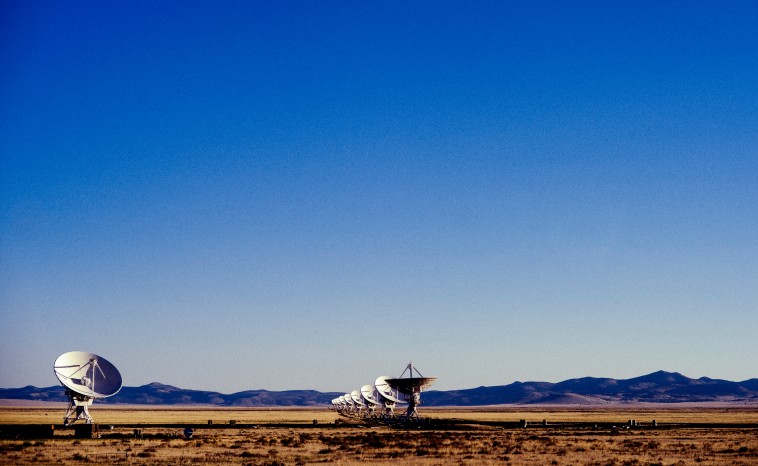What Is SETI?

In this article, we’ll explore the fascinating world of SETI. We’ll take a closer look at the programme’s history, examine the technologies scientists use in their search, and consider the future of SETI.
Have you ever found yourself gazing up at the vast expanse of the night sky, mesmerised by the countless twinkling stars, and pondering the unfathomable question, “Are we truly alone in this vast universe?” If so, you are not alone! This profound query lies at the very core of a continuous scientific pursuit called SETI – the Search for Extraterrestrial Intelligence.
What Is SETI?

The acronym SETI stands for the Search for Extraterrestrial Intelligence, but it is much more than a mere collection of words. It embodies a universal quest, a desire to understand our place in the grand tapestry of existence. SETI research incorporates several scientific disciplines, such as astronomy, physics and computer science, and uses advanced technology to scrutinise the cosmos for signals that may be evidence of intelligent life.
The primary tool for this investigation is the radio telescope, capable of detecting faint signals from deep space, some of which could be transmissions from other civilisations. While the lack of a definitive signal thus far might be disheartening to some, it only fuels the determination of SETI scientists. They comprehend that the search is immense, akin to searching a desert grain by grain. Yet, they persist, driven by the tantalising possibility of making the most profound discovery in human history – that we are not alone.
Nonetheless, SETI is not just about finding alien life. It is also about expanding our understanding of the universe and our place within it. Each discovery, each new piece of knowledge we acquire, whether it relates to a distant star or a previously unknown cosmic phenomenon, enriches our comprehension of the universe and, by extension, ourselves.
A Brief History of SETI
It all began in the early 1960s, when the visionary astronomer Frank Drake conducted the first modern Search for Extraterrestrial Intelligence (SETI) experiment, named “Project Ozma”, in a quest to detect interstellar radio waves that could potentially carry messages from intelligent beings beyond our planet. This groundbreaking initiative marked the humble beginnings of an extraordinary journey that would captivate the minds of scientists and the public alike.
Since then, the field of SETI has grown and evolved into a global collaborative effort, transcending borders and bringing together brilliant minds from diverse disciplines. It has become a beacon of curiosity, uniting humanity in the pursuit of an answer to one of its most profound and existential questions: Are we alone in the universe?
Throughout the years, SETI scientists have faced numerous challenges and hurdles in their quest for knowledge. From funding cuts threatening to halt their progress to scepticism from some corners of the public, they have persevered with unwavering determination and resilience. Their steadfast commitment is fuelled by the tantalising possibility of making one of the most significant discoveries in human history – the confirmation of intelligent life beyond Earth, forever reshaping our understanding of our place in the cosmos.
Techniques and Technologies

SETI researchers use various cutting-edge techniques to search for signs of alien life. One key method is monitoring radio and optical signals from space, hoping to intercept an extraterrestrial broadcast.
Remember the famous scene in the film “Contact”, where Jodie Foster hears a signal from a distant star system? That’s not too far off from what SETI scientists are trying to achieve. They’re looking for proof – not just of simple life forms but of advanced civilisations capable of communicating across the cosmos.
While ET hasn’t phoned home just yet, SETI research has yielded some intriguing results. The Allen Telescope Array, for instance, is constantly scanning the skies for “technosignatures”—signs of technology, like radio waves, that could indicate the presence of an advanced civilisation. In 1977, the now-famous “Wow!” signal was detected by SETI astronomers. Although it has never been confirmed to be of extraterrestrial origin, it remains one of the most significant potential discoveries in SETI history.
But despite these promising developments, funding for SETI research remains a constant challenge. The search for alien life is a costly endeavour, and without the support of both public and private institutions, it could become a thing of the past. That’s why it’s essential to continue to advocate for the importance and potential rewards of SETI research.
How Modern Advancements Like the JWST Have Helped SETI

Credit: Adriana Manrique Gutierrez, NASA Animator
The advent of modern technology has significantly fuelled the progress of SETI research. The James Webb Space Telescope (JWST) is the latest example of new technology that promises to offer new horizons for the quest for extraterrestrial intelligence. The JWST’s prime mission is to explore the universe’s origins, but its state-of-the-art infrared capabilities also make it a powerful tool for SETI researchers. It can detect the heat signatures of exoplanets, potentially offering clues to the existence of civilisations advanced enough to alter their planets’ climates.
Moreover, the JWST opens the door to study the atmospheres of these exoplanets in unprecedented detail. By analysing the composition of an exoplanet’s atmosphere, we can detect the presence of gases associated with life as we know it, such as oxygen or methane. And perhaps, just perhaps, we might even stumble upon ‘technosignatures’ in the form of pollution gases—clear evidence of an industrious civilisation.
What Lies Ahead for SETI?

The future of SETI is as exciting as it is uncertain. With advances in technology and data analysis, we’re better equipped than ever to detect signs of extraterrestrial intelligence. Who knows what discoveries await us?
SETI is more than just a scientific project—it’s a testament to human curiosity and our longing to understand our place in the cosmos. Whether or not we find alien life, the search itself enriches us, teaching us more about the universe and ourselves.
So, next time you look up at the stars, spare a thought for the scientists tirelessly scanning the heavens. They’re not just searching for aliens—they’re seeking answers to some of life’s biggest questions.
Fly Me to the Stars
But why limit your exploration to our earthly vantage point? Dive headfirst into the cosmic theatre with the Fly Me to the Stars VR app. After downloading the app and placing your phone in your VR glasses, you can break down the barriers of the physical world and journey through the cosmos in an immersive virtual reality experience. Travel the stars, examine the constellations, and try to score high on the in-app constellation game — because the universe is just a click away!

